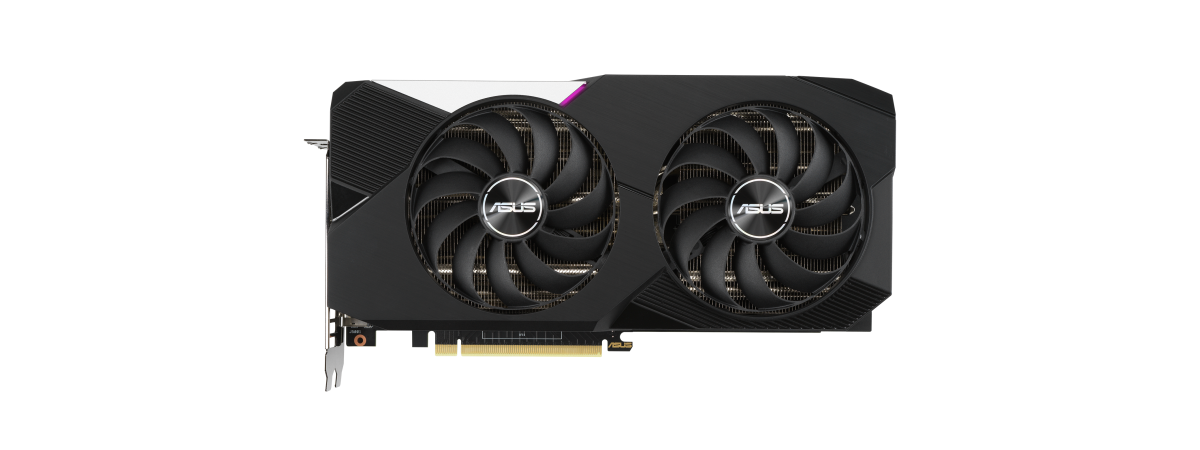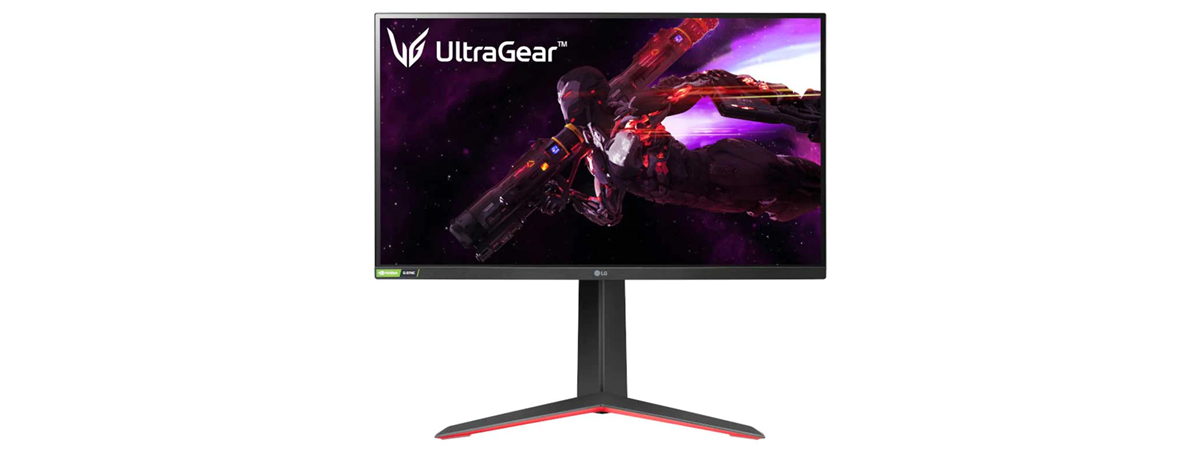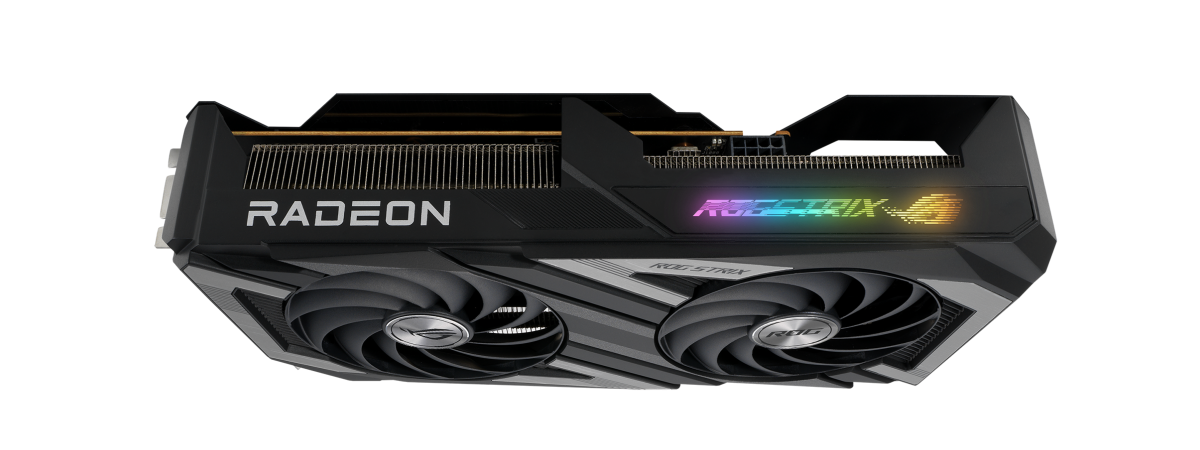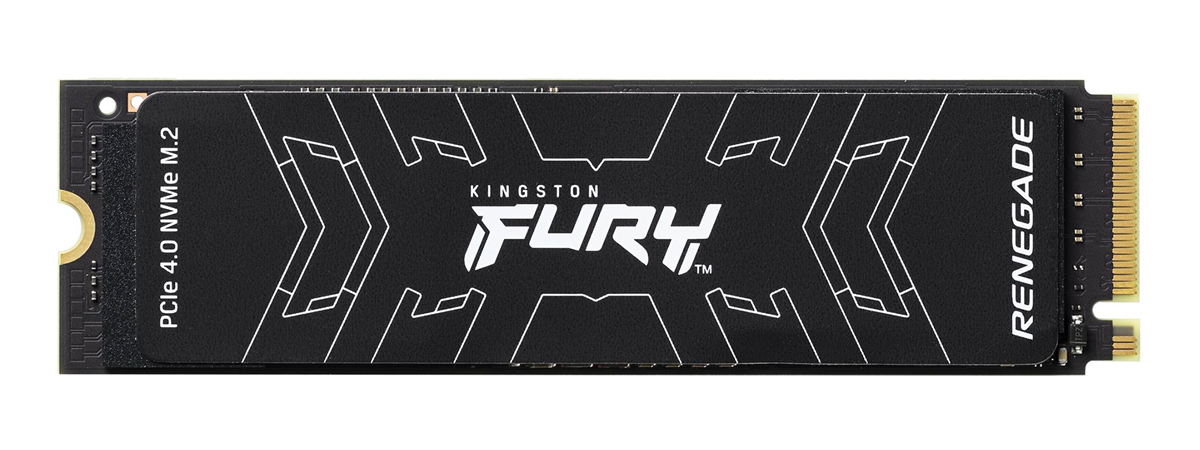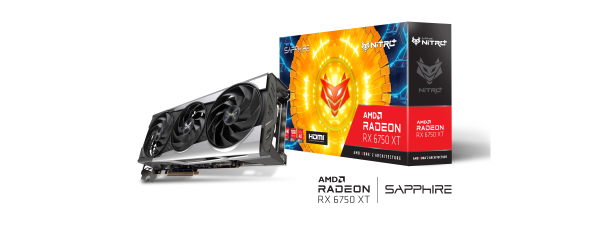
AMD has refreshed its lineup of RDNA 2 GPUs, and we also got the new AMD Radeon RX 6750 XT. It’s an upgraded version of the Radeon RX 6700 XT mid-range GPU. Taking advantage of this opportunity, Sapphire didn’t waste any time and released its own implementation: the Sapphire Nitro+ AMD Radeon RX 6750 XT. Designed for gaming in 1440p resolution, it aims to cover a market segment that’s already crowded with many competitive options. Is it a good choice for you, or should you look for other alternatives? Read this review to find out what the Sapphire Nitro+ AMD Radeon RX 6750 XT can do:
Sapphire Nitro+ AMD Radeon RX 6750 XT: Who is it good for?
This graphics card is a good choice for:
- Gamers who want excellent performance for gaming in 1440p or 1080p resolutions
- Users who want a fast graphics card that’s also very quiet
- Those who don’t already own an AMD Radeon RX 6700 XT or a similar GPU
Pros and cons
Here are the key positive aspects you should know about this graphics card:
- Top-notch performance for gaming in 1440p and 1080p resolutions
- Lots of fast GDDR6 RAM running at a speed of 18 Gbps
- Oversized cooling solution
- Extremely silent even in demanding situations
As for its downsides, keep in mind:
- Not a significant upgrade from an AMD Radeon RX 6700 XT
- Ray tracing is underwhelming
- Increased power consumption
Verdict
The Sapphire Nitro+ AMD Radeon RX 6750 XT is a premium implementation of an otherwise mid-range GPU that brings relatively little improvement over its predecessor, the AMD Radeon RX 6700 XT. The Radeon RX 6750 XT brings just a small increase in boost clock but delivers additional performance by using faster memory. Offering excellent frame rates in both 1440p and 1080p gaming, Sapphire’s implementation also benefits from an oversized cooling solution that makes it extremely quiet in all situations. Taking all of the above into account, as well as the increase in price, I’d say that the Sapphire Nitro+ AMD Radeon RX 6750 XT is a good choice for gamers who want a good mid-range graphics card, but not for those who already have an AMD Radeon RX 6700 XT or an Nvidia Geforce RTX 3070.
Unboxing the Sapphire Nitro+ AMD Radeon RX 6750 XT
The Sapphire Nitro+ AMD Radeon RX 6750 XT arrives in a huge box, so you can guess right from the start that the card itself is oversized. The package is colorful and full of details about the graphics card.
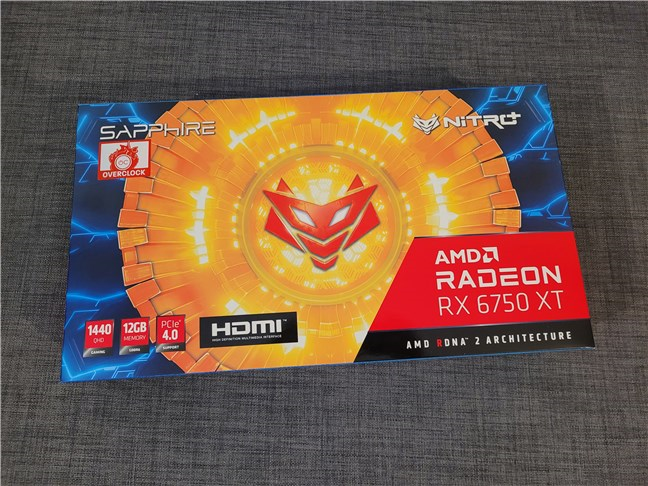
The box of the Sapphire Nitro+ AMD Radeon RX 6750 XT
Inside the box, there’s the graphics card, a bracket support, some screws, and documents. And yes, this is a large card, so it’s nice to see that Sapphire bundled a bracket support for it.
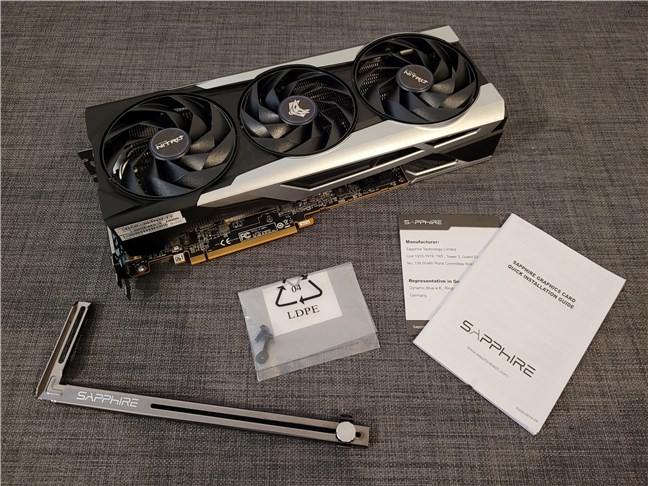
What's inside the box
Unboxing the Sapphire Nitro+ AMD Radeon RX 6750 XT is a pleasant experience. Although it uses a mid-range GPU, the card is equipped with an oversized cooling solution, which means it should deliver every inch of performance it’s capable of, while still being quiet. I also appreciate the inclusion of a bracket support considering that the size of the card also means significant weight.
Design and hardware specifications
The Sapphire Nitro+ AMD Radeon RX 6750 XT is based on an updated implementation of the AMD Radeon RX 6700 XT GPU, with a few changes in specifications. The boost clock is a bit higher: 2600 MHz on the RX 6750 XT versus the 2581 MHz of the RX 6700 XT. Unimpressive, to be honest, and not much performance will be gained from that. However, the RX 6750 XT should offer extra speed thanks to another change: faster memory than its predecessor. The RX 6750 XT features 18 Gbps GDDR6, which translates into 12.5% more bandwidth. In short, it looks like the AMD Radeon RX 6750 XT is a slightly overclocked version of the older Radeon RX 6700 XT GPU.
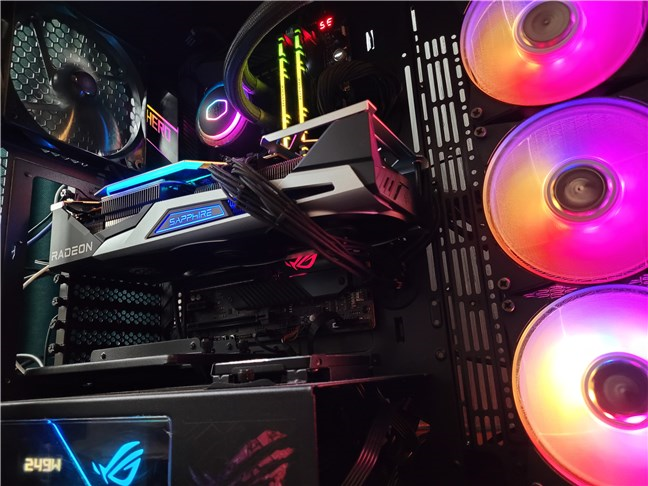
The Sapphire Nitro+ AMD Radeon RX 6750 XT in a gaming PC
Obviously, that also means that video cards based on this GPU will require a bit more power too: 20 Watts more, to be precise. Furthermore, AMD also increased the price from about 479 USD for the RX 6700 XT to 549 USD for RX 6750 XT. So, what we get, in theory, is a slightly faster GPU for some additional cash.
Moving on, the Sapphire Nitro+ AMD Radeon RX 6750 XT that I’m reviewing today is definitely an imposing card. Just look at it:
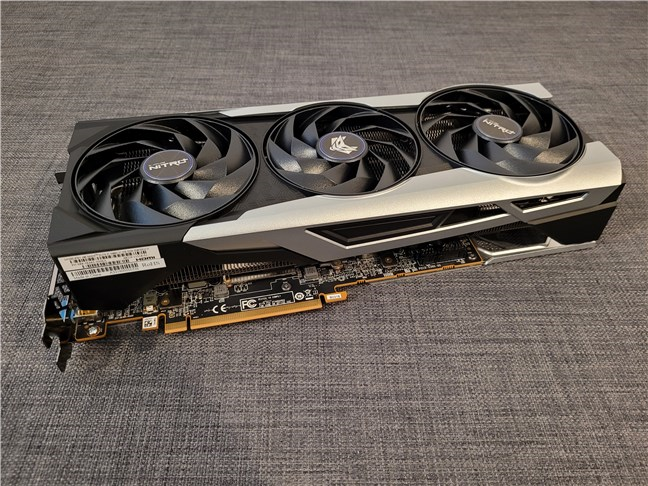
The Sapphire Nitro+ AMD Radeon RX 6750 XT is large
The card looks like a monster and feels like one too. 🙂 The cooling solution chosen by Sapphire is massive: three fans on top of a really thick heatsink, five copper heat pipes, and a metal backplate on the other side. Measuring 31 by 13.08 centimeters (12.2 by 15.5 inches) in length and width, and 6.22 centimeters (2.45 inches) in thickness, this graphics card is so big that it will occupy three PCIe slots on your motherboard.
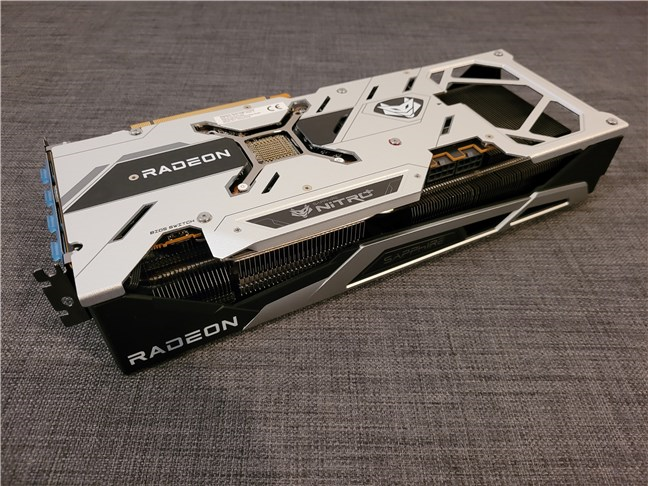
The metallic backplate on the Sapphire Nitro+ AMD Radeon RX 6750 XT
I find the massive cooler to be overkill for the RX 6750 XT GPU used by the card. Nonetheless, besides looking great, it’s certainly helpful in terms of heat dissipation and quietness. Sapphire’s card is only whispering even in the most demanding situations.
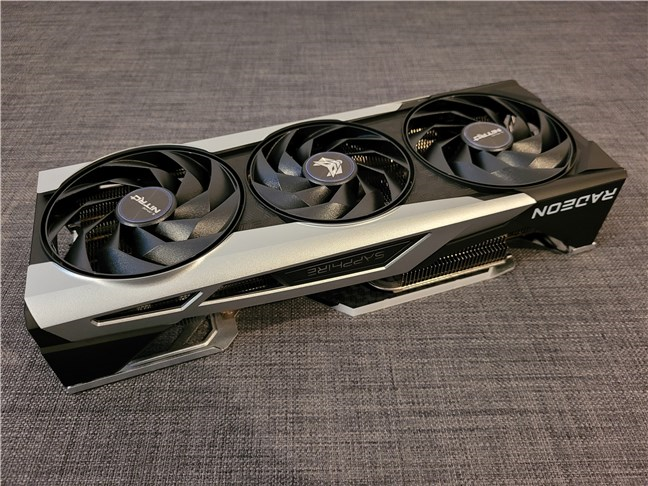
There are three fans on the Sapphire Nitro+ AMD Radeon RX 6750 XT
The backplate on the Sapphire Nitro+ AMD Radeon RX 6750 XT looks great too, and besides protecting the circuits, it also keeps the card from bending. Furthermore, you can also take advantage of the bundled bracket support to further sustain the card inside your PC.
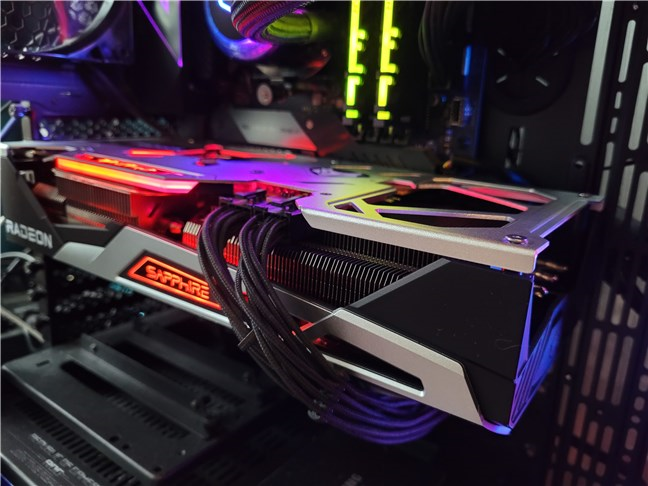
2 8-pin power connectors are required
Sapphire’s RX 6750 XT graphics card comes with 12 GB of GDDR6, 2560 stream processors, 40 ray accelerators, and 96 MB of Infinity Cache. Running on PCI Express 4.0 x16 and designed for gaming in resolutions of up to 1440p, the card has three DisplayPort(s) and one HDMI port.
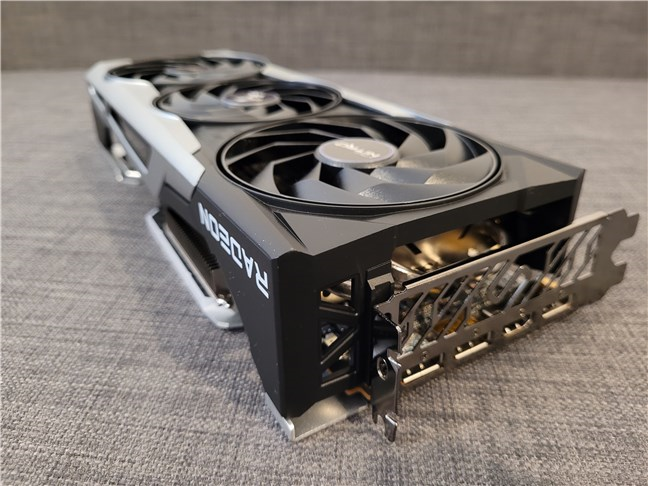
Three DisplayPort and one HDMI are available
Sapphire also chose to go over AMD’s power requirements specification for the RX 6750 XT GPU. While the standard RX 6750 XT needs 250W, Sapphire’s graphics card requires 273 Watts. By the way, the additional electrical power is drawn via two eight-pin power connectors.
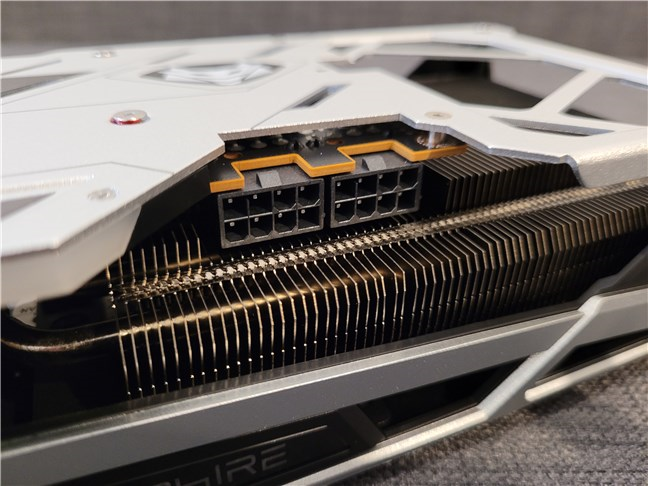
The graphics card has significant power requirements
If you want to see more details about this graphics card’s features and hardware specifications, visit Sapphire Nitro+ AMD Radeon RX 6750 XT.
The Sapphire Nitro+ AMD Radeon RX 6750 XT appears to be an excellent implementation of the mid-range Radeon RX 6750 XT GPU. Although the GPU itself offers only a relatively small amount of performance boost compared to the RX 6700 XT, Sapphire’s implementation is premium.
Performance in games and benchmarks
To see what the AMD Radeon RX 5700 XT graphics card can do in real life, I benchmarked it using several games and apps, comparing its results to those I got from a next-tier AMD Radeon RX 6800. The computer used for testing had the following configuration:
- Processor: AMD Ryzen 9 5900X
- Motherboard: ASUS ROG Crosshair VIII Hero (Wi-Fi)
- Memory: HyperX Predator DDR4 RGB (2 x 8 GB, 3200 MHz)
- Storage: Kingston KC3000 M.2 NVMe PCIe 4.0 2TB SSD
- Monitor: ASUS ROG Strix XG32VQ (2560x1440, 144Hz)
- Power Supply Unit: ASUS ROG Thor 850W Platinum
- CPU cooler: Cooler Master MasterLiquid ML360R RGB
- Operating System: Windows 11 Pro (version 21H2, build 22000.918)
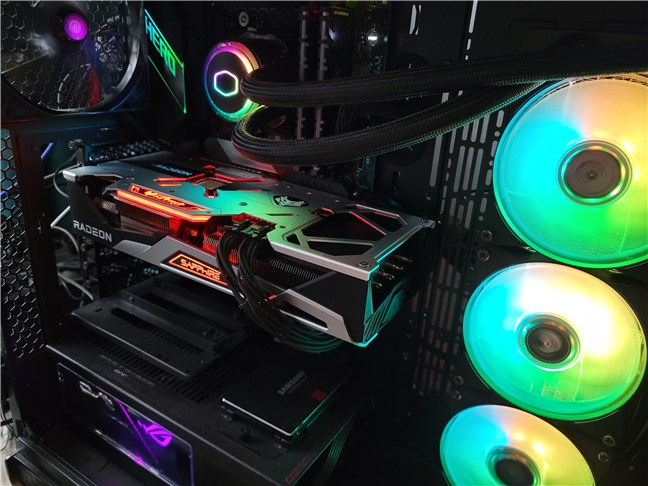
The gaming PC used for benchmarks
I benchmarked all the games using the high or ultra graphics settings presets, depending on which preset was the most demanding.
Shadow of the Tomb Raider is a game with visuals that are still impressive to this day, but all that beauty has its price. Obviously, it requires a powerful graphics card to run at maxed settings. I measured an average of 174 fps in 1080p and an average fps of 117 in 1440p. While the Radeon RX 6770 XT is a bit slower than the AMD Radeon RX 6800 XT, the number of frames per second is top-notch, above 100 fps, in both cases.
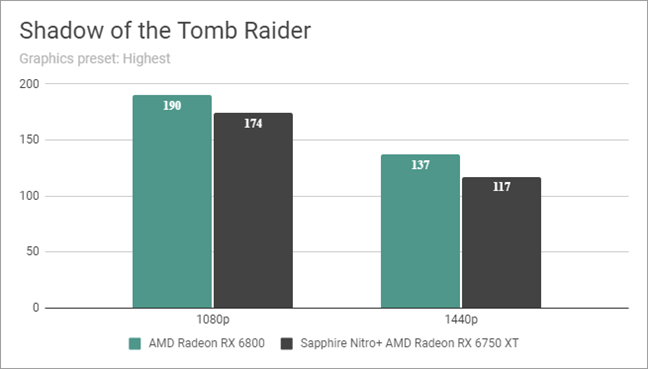
Benchmark results in Shadow of the Tomb Raider
Metro Exodus, released back in 2019, is still one of the most demanding PC games, especially if you want to play it with the best graphics. The Radeon RX 6750 XT delivered excellent frame rates in both 1080p and 1440p resolutions. The average framerate I measured was higher than 60 fps in both cases.
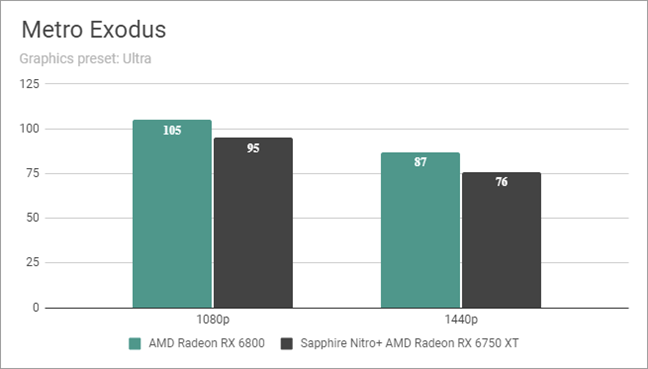
Benchmark results in Metro Exodus
I’ve also benchmarked Horizon Zero Dawn, a game that impressed me with its environment, characters, and “robotic” fauna from the first time I saw it. Although it’s quite a demanding game in terms of graphics performance, the Radeon RX 6750 had no issues rendering over 100 frames per second in both 1080p and 1440p resolutions.
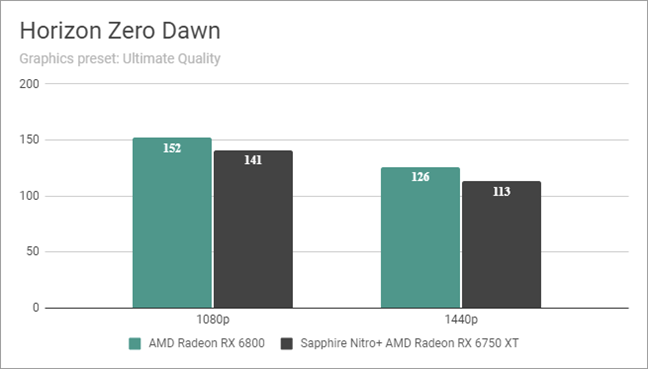
Benchmark results in Horizon Zero Dawn
Next on my list was CyberPunk 2077. While it had its fair share of glitches and bugs at launch, most issues have been resolved today, and the game is exquisite. With the Sapphire Nitro+ AMD Radeon RX 6750 XT, on ultra settings but without ray tracing, I got an average of 99 fps in 1080p and precisely 60 fps in 1440p. That’s great, considering how demanding this game is.
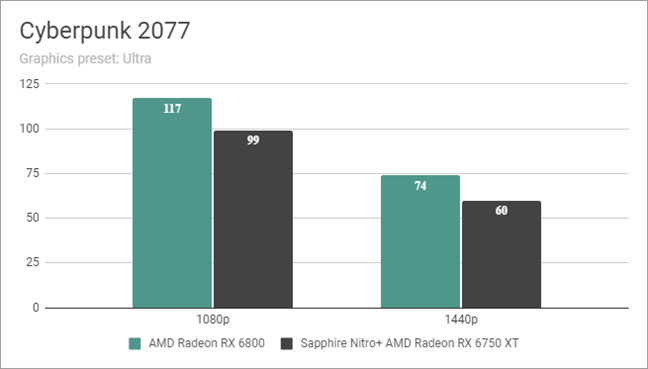
Benchmark results in Cyberpunk 2077
The last game I tested was Assassin’s Creed Valhalla. Sapphire’s Radeon RX 6750 XT graphics card performed excellently. I got over 100 fps in 1080p and 90 fps in 1440p, which is quite an outstanding result. Furthermore, in 1080p, it rendered almost the same number of fps as the Radeon RX 6800.
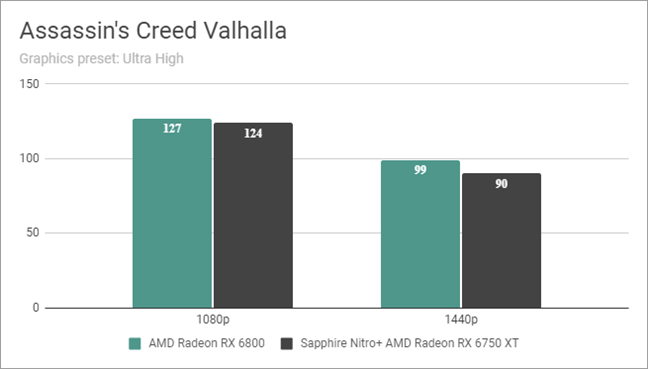
Benchmark results in Assassin's Creed Valhalla
Once I finished checking games, I moved on to benchmarking Sapphire’s Nitro+ AMD Radeon RX 6750 XT with 3DMark. The card got an excellent score of 13602 points in the regular Time Spy test. However, the 40 ray accelerators on the RX 6750 XT are too few to get good ray tracing performance or a good score in 3DMark’s Port Royal benchmark. It only managed 6280 points. And, if you look at the next chart, you’ll see that the AMD Radeon RX 6800 is quite significantly more powerful.
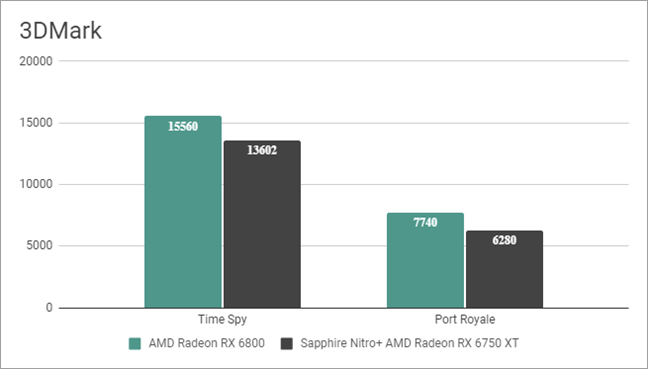
Benchmark results in 3DMark
During the benchmarks, I monitored the temperature and power consumption of the graphics card. The Sapphire Nitro+ AMD Radeon RX 6750 XT reached a peak temperature of 67 degrees Celsius (152.6 degrees Fahrenheit) and had a power consumption of about 230 Watts. This proves that the oversized cooling solution on Sapphire’s RX 6750 XT card is excellent. Power consumption, on the other hand, is quite significant, although it didn’t reach the official maximum.
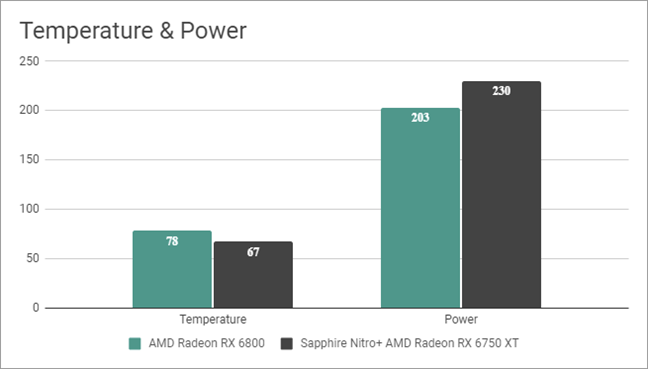
Sapphire Nitro+ AMD Radeon RX 6750 XT: Temperature and power consumption
The Sapphire Nitro+ AMD Radeon RX 6750 XT shapes up as an excellent mid-range graphics card. Unless you want ray tracing, the performance it offers for gaming in 1080p and 1440p resolutions is great. Although its price tag and power requirements are a bit higher than that of the Radeon RX 6700 XT, so is its performance.
What is your opinion about the Sapphire Nitro+ AMD Radeon RX 6750 XT?
Now you know what the Sapphire Nitro+ AMD Radeon RX 6750 XT can do and my opinion about it. How about you? Do you like this graphics card? Would you buy it, or would you choose a similar card from the competition? Let me know in the comments section below.




